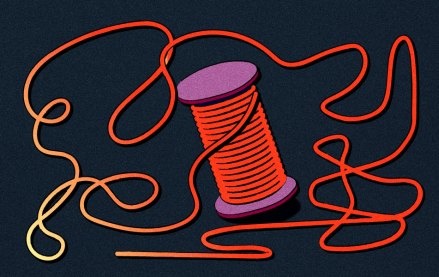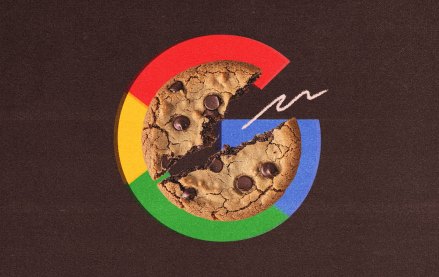
It was a banner year in 2014 for the mobile team at Horizon Media. It won a coveted Clio award for curating “Drinking Wine with Friends” playlists on music streaming app Songza for client Robert Mondavi Winery. It also added three new members, increased mobile media spending by 40 percent from the previous year and in December was named Mobile Agency of the Year by industry publication Mediapost.
And then, just before the year ended, the team’s planning and buying responsibilities were moved to the agency’s broader digital team.
The move did not mark a decreased role for the mobile team, however. The agency is actually planning on increasing its mobile spend in 2015. Rather, having the digital team assume the mobile team’s buying responsibilities signifies just how integral mobile has become to the agency. It is a sign, seen across the digital media world, of mobile moving from being treated as a separate speciality into becoming an integral part of broader agency operations.
“The landscape has changed significantly over the last couple of years,” Horizon’s vp of mobile strategy Sarah Bachman. “It was far more complex and the barrier to entry was higher. Today, it’s a bit more ingrained in what we do, so to have that as part of our broader digital team made sense.”
Mobile was once relegated to the proverbial agency sidelines, with small specialist teams consulted near the end of the campaign strategy process, tacked on seemingly so as to assure clients that, yes, there indeed was a mobile strategy in place. It was firmly in the “experimental” bucket. Now, mobile teams — and, correspondingly, mobile budgets and strategies — are being factored into campaigns from their inceptions.
“Mobile is much different than it was just two years ago,” according to Joao Machado, director of mobile at OMD. “It went from clients and brands saying, ‘Do I need to do mobile?’ to ‘How do I do mobile?’ … It’s part of everything now, and brands can’t just make it an 11th hour activation. It has to be part of a longer process.”
And that larger role has dovetailed with OMD evolving its mobile consultancy Airwave. Airwave — a collection of mobile experts, most of whom are embedded in client-specific strategy teams — has grown from just Machado when it was launched in 2010 to more than 130 members in 2014, a 25 percent increase from the year before.
Airwave’s role within those teams has changed, too. Whereas Airwave members used to act as mobile evangelists within their respective teams, they now consult clients on more complex topics such as optimizing creative, content distribution and branding for mobile.
Starcom Media Group used to have a top-down approach to mobile, with Derek Thompson dictating mobile strategy from Starcom’s management tier.
The problem was his expertise “wasn’t accelerating our knowledge amongst SMG’s client teams,” Amanda Richman, Starcom’s president of investment and activation, told Digiday.
So Starcom revamped its structure two years ago in order to create a Mobile Center of Excellence, a team of mobile experts that, as with OMD, integrated themselves in client-specific teams and provided mobile insight throughout the entire agency.
The goal was to think about marketing more holistically, and how mobile touches upon marketing in other channels such as TV, social outdoor channels.
The question then arises: If mobile is becoming increasingly woven into agencies’ structures and strategies, and the difference between digital expertise and mobile expertise becomes less distinct, what need, if any, is there for staffers and teams narrowly focused on mobile?
As to the future of mobile expertise, the mobile experts are split.
“We’re seeing the distinction of digital has less meaning because everything is digital now. And in a few years time, maybe mobile will be the same way,” Richman said. “There might not be the need to have mobile experts, but have more mobile expertise throughout our agency.”
Machado said he understands that sentiment, but that mobile expertise will be in higher demand than ever in the coming years.
“One would think that mobile is becoming an omnipresent channel and the specialist is a dying breed because mobile is woven into everything,” he said. “But mobile specialists are needed more than ever because there’s an incredible amount of white noise out there.”
Indeed, Snapchat and Instagram have quickly emerged as prominent media channels, but they could’ve been easily overlooked by digital agency executives due to their mobile-only nature. (While Instagram has a desktop website, users can only post from the mobile app.)
In the meantime, Bachman, Machado and Richman all said they’re planning to grow their mobile teams, a reflection of the growth of mobile ad spending — it’s projected to grow 50 percent from 2014 to 2015, per research firm eMarketer — and the proliferation of wearable computers and Internet-enabled cars and home appliances.
“That innovation and how to harness it for our marketers is going to be a big opportunity,” Bachman said.
Image via Shutterstock
More in Marketing

Meta’s Threads ads arrive fast, but advertisers move at their own pace
Threads ads are here, and so is the predictable wave of testing.

Privacy fatigue is setting in after Google’s cookie U-turn. But the search for alternatives hasn’t stopped
Third-party cookies are still widespread but they’re no longer foundational. The shift is already underway, it’s just no longer waiting on Chrome.

Confessions of a media buyer on Google’s third-party cookie U-turn and how it helped a ‘largely lazy’ industry innovate
For media buyers, it’s been a wild time filled with false starts, urgency and many delays to an ever-extending deadline.





